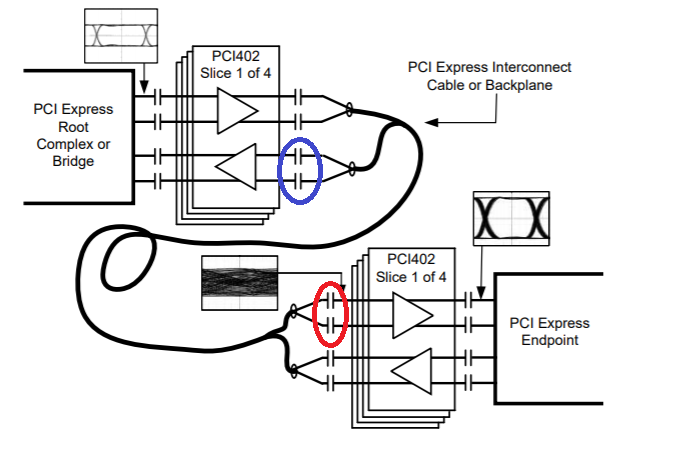Dear Technical Support Team,
My application is using backplane with PCI402.
If only AC coupling on the RX side of the endpoint of the backplane is changed to 0Ω resistance
Link up now works properly. (Red circle )
If I change only the AC coupling on the bridge RX side of the backplane to a 0Ω resistor,
There are the link issue sometimes. (Blue circle)
Can the AC coupling on the RX side be omitted if the backplane length is short?
Best Regards,
ttd


